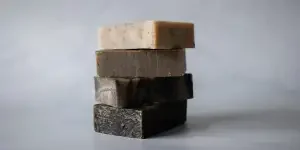Using the right seasoning tools in the kitchen as well as in the dining room can make all the difference when it comes to a dish’s flavor. One of the most important seasonings to use is salt. And when it comes to salt, a high-quality salt grinder is essential, and buyers will be looking for one that’s durable, easy to use, and performs well. From the materials of the grinder down to the grind consistency, choosing a salt grinder that’s suitable for specific cooking styles will have a big impact on the meal.
Keep reading to learn more about the best types of salt grinders on the market, including their key features and in what situations they’re most likely to be used.
Table of Contents
What type of salt should be used in a salt grinder?
Can a salt and pepper grinder be used interchangeably?
How to maintain a salt grinder
Global market value of salt and pepper grinders
The most popular types of salt grinders
Manual twist salt grinders
Rustic wood grinders
Electric salt grinders
Final thoughts
What type of salt should be used in a salt grinder?
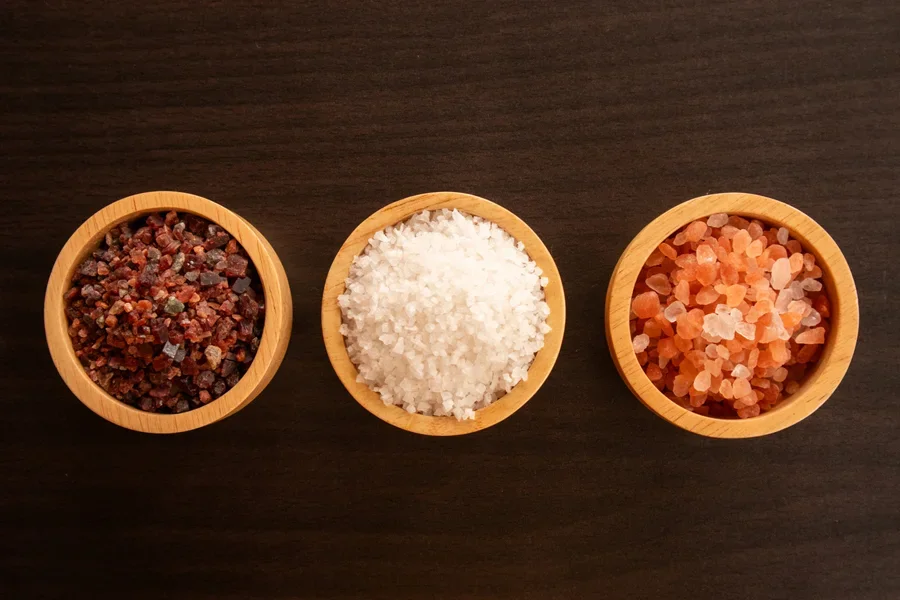
This may seem like a simple question, but not all salts are designed to be used with a salt grinder. That’s because fine salts, such as table salt, and wet salts, such as Celtic sea salt, can clog the grinder or corrode the mechanism over time. For people who prefer to use moist salt, it’s recommended that they choose a grinder with a ceramic mechanism or dry the salt out first.
Salt grinders are best used with coarse, dry salts such as rock salt, sea salt, or Himalayan salt. These larger salt crystals are perfect for grinding into finer, smooth salt that can be used in all types of dishes. As long as the salt is coarse and dry, it can effectively be used in a salt grinder.
Can a salt and pepper grinder be used interchangeably?
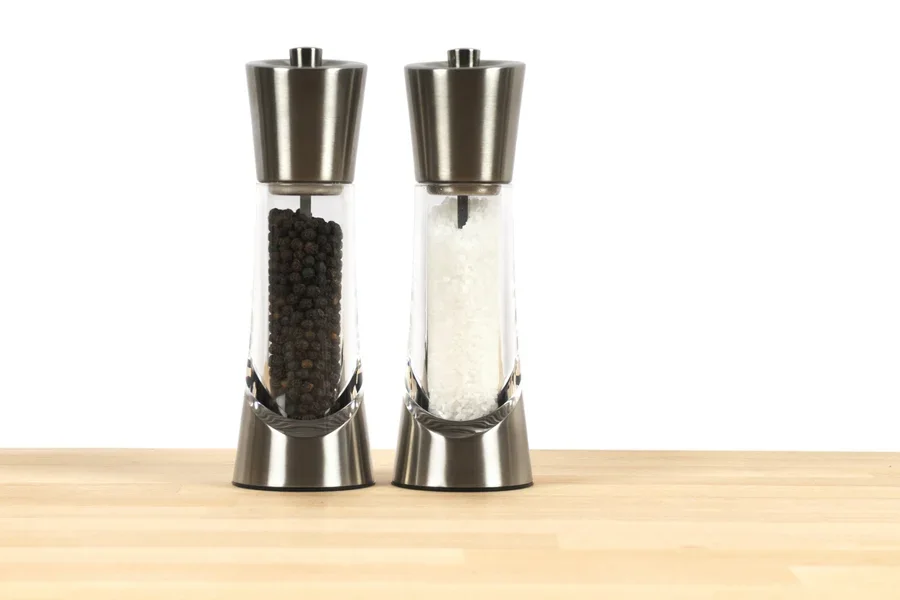
Unless specifically stated by the manufacturer, it’s not advisable to interchange salt and pepper grinders. There are a number of reasons for this:
- The key reason is that the grinding mechanisms are different. Salt grinders have a ceramic innovative mechanism that’s resistant to corrosion, whereas pepper shakers use stainless steel or carbon steel, which is prone to rusting over time if used with salt.
- Salt crystals aren’t as hard as peppercorns. Pepper grinders are designed with this toughness in mind, but salt grinders are meant to crush soft crystals.
- When sold in pairs, some are designed with a specific grinding purpose in mind. Although adjustable grinders are manufactured, high-quality grinders will be purpose-built.
- Flavor mixing can cause the salt to absorb the flavors and oils from the peppercorns, which can negatively affect the flavor of the salt when seasoning and cooking.
How to maintain a salt grinder
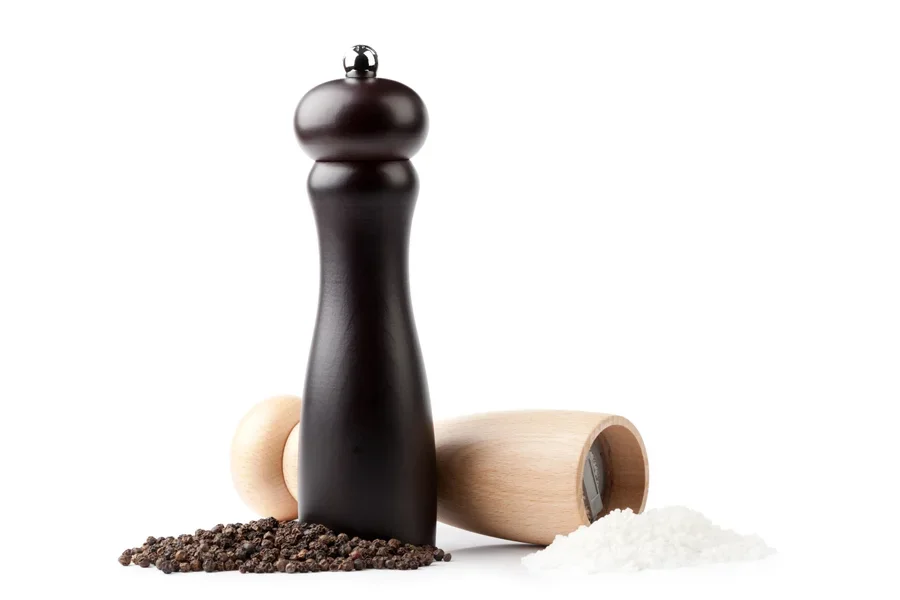
Maintaining a salt grinder properly will ensure that it lasts longer and works to its maximum capacity. A salt grinder should be stored in a dry location, as moisture can lead to corrosion and clumping around the interior mechanism. It should be cleaned often with a damp or dry cloth to remove any residue. It’s not advised to submerge the salt grinder in water at any time or to let it dry in the open air by patting it down first.
When filling a salt grinder, it should never be filled right to the top. Leaving some space will allow the mechanism to work effectively without the risk of jamming. The interior of the salt grinder should be emptied of all salt on a regular basis. To clear out salt dust and to help absorb oils, a popular kitchen hack is to grind uncooked white rice through it.
Using the right salt seems like an obvious statement, but many buyers aren’t aware of the impact neglect or the wrong salts can have on the grinder’s mechanism. It’s very important that users stick to dry and coarse salts, such as sea salt.
Global market value of salt and pepper grinders
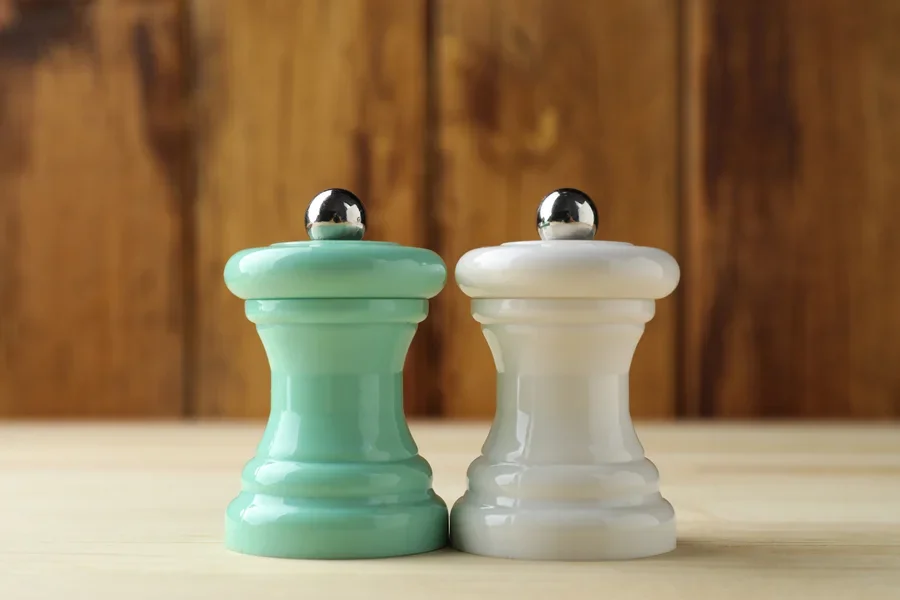
With the kitchenware industry constantly evolving, essential kitchen tools like salt and pepper grinders are seeing higher demand. This demand stems from new technological innovations emerging, as well as consumer demands for tools that bring an authentic touch to the kitchen.
By 2032, the global market value of salt and pepper grinders is set to reach over USD 1 billion, which is a big increase from its value in 2024, which sat at USD 0.73 billion. Between 2023 and 2032, the market will grow by a compound annual growth rate (CAGR) of 4.5%. Manual grinders will still be the most popular, but electric grinders are expected to increase in popularity during the projected period.
Brands such as Le Creuset, Onyx, and Hexmill are leading the way in terms of performance, innovation, and elegance.
The most popular types of salt grinders
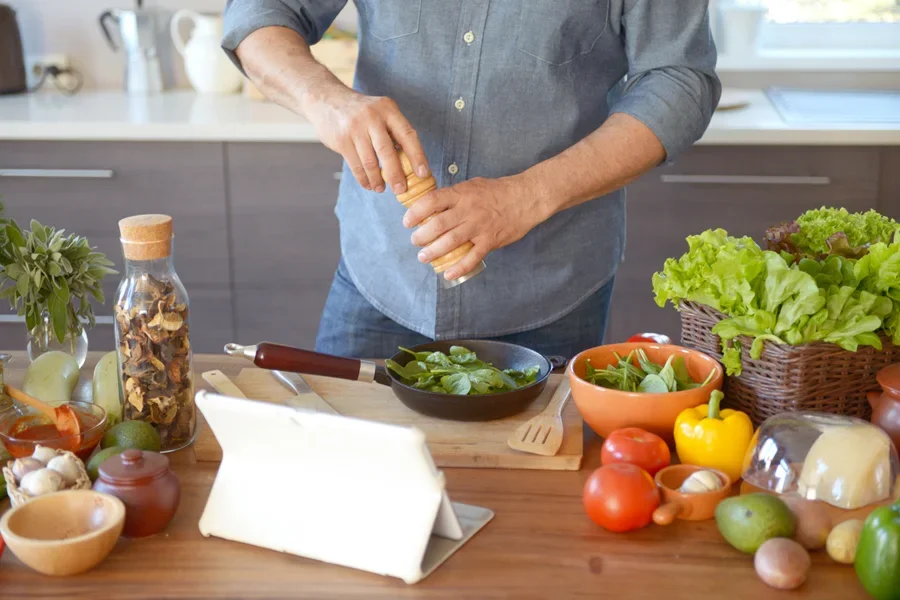
According to Google Ads, “salt grinder” had an average monthly search volume of 14,800 in 2024. The most searches came in January, when they reached 18,100. The rest of the year saw searches remain steady at the average search volume, with only two small dips to 12,100 searches in both March and May.
There are several types of salt grinders that are popular with today’s consumers, and each one has its own attractive features. Keep reading to learn more about them.
Manual twist salt grinders
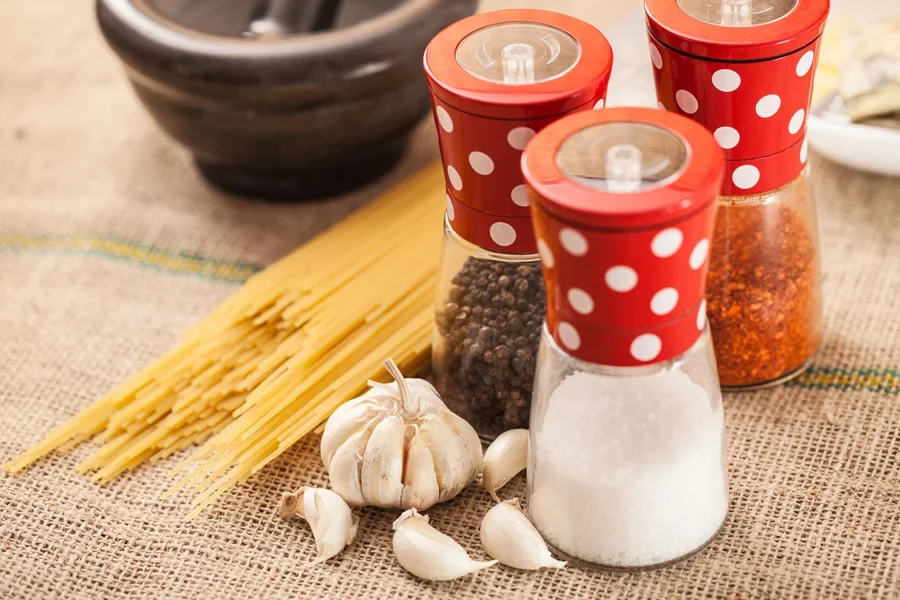
The most common type of salt grinder is the manual twist grinder. It’s typically made from stainless steel, wood, or clear acrylic and it requires the user to twist either the body or the top to grind the salt. This functionality allows for a higher level of control than simply pouring salt from a shaker. Most models now include adjustable salt coarseness settings, so they’re ideal for use in all types of cooking situations.
What buyers love about manual twist salt grinders is that they’re reliable and durable, unlike other styles. Each product also features a removable lid to prevent damage to the mechanism and for storage purposes. People who prefer timeless aesthetics and a hands-on approach to cooking can’t beat a manual grinder.
Rustic wood grinders
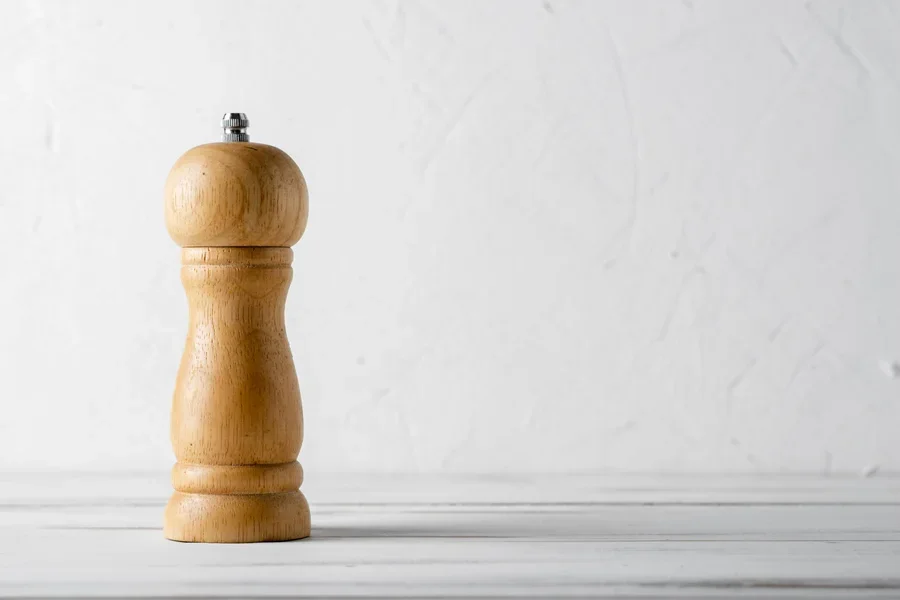
One of the most aesthetically pleasing salt grinders on the market is the rustic wood grinder. This type of grinder is more expensive than others due to the craftsmanship. This essential tool is made from natural hardwoods such as beech or walnut, and it’s manually operated with a metal or ceramic grinding mechanism.
Although it doesn’t have a lot of tech features, the rustic wood grinder is highly popular among buyers looking for a high-quality kitchen accessory that oozes tradition and gives an authentic touch to any space. It’s very common to purchase wooden salt and pepper grinders in a bundle too, which will seriously upgrade any kitchen game.
Electric salt grinders
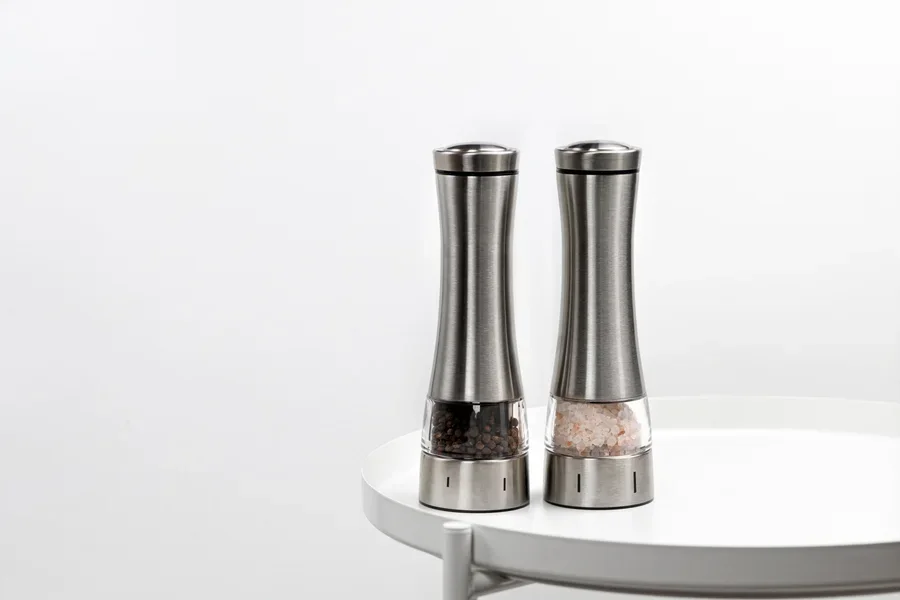
Electric salt grinders are a great option for people who have a problem with hand strength or those who are cooking often and need to speed up the seasoning process. This new generation of salt grinders are either USB-charged or have batteries, and the grind size can be altered with just the press of a button.
They’re generally designed using durable plastic or stainless steel to ensure their stability as well as their longevity. The corrosion-resistant mechanism with these grinders is known to produce the prettiest salt for seasoning.
Models that feature coarseness adjustment and LED lighting are the most popular as these features add extra visibility when seasoning directly over dishes. Electric salt grinders aren’t for everyone, but they’re most suited to modern kitchens or those that have high-traffic and need to be as efficient as possible.
When paired with electric pepper mills, these salt grinders are a welcome addition to any modern kitchen.
Final thoughts
It may seem like a small detail, but choosing the best salt grinder for the kitchen is essential. It can greatly enhance the overall cooking experience, whether durability, convenience, or precision is the most valued by an individual. It’s very important that buyers understand the key features of each salt grinder and the way they work, so they can make an informed decision that suits their style.
From classic manual twist grinders to electric and rustic salt mills, there are enough variations in the market to suit the needs of everyone.

